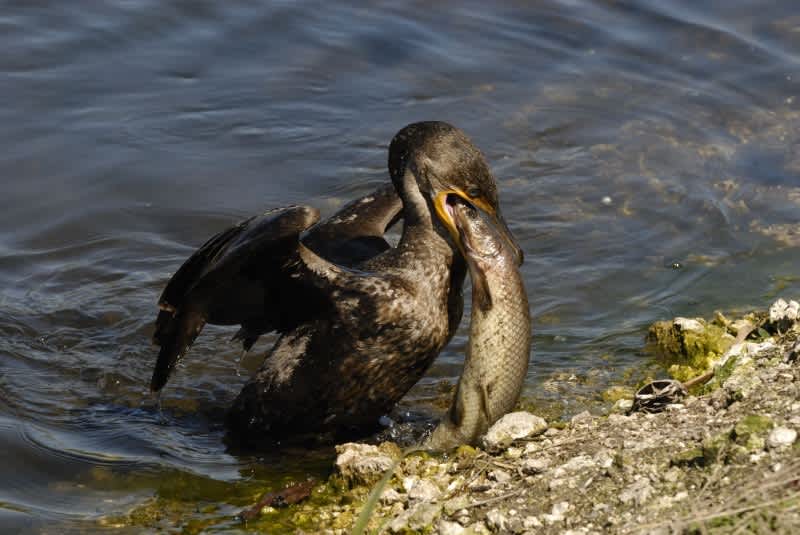South Carolina’s First Cormorant Hunt Brings in over 11,000 Birds
OutdoorHub Reporters 04.08.14

Between February 2 and March 31, South Carolina hunters flocked to the Santee Cooper lakes for the state’s first-ever double-crested cormorant hunt. According to The State, the inaugural season ended with 11,653 birds harvested. This is good news for many of the area’s anglers, who supported the hunting season due to the cormorants’ voracious predation upon both forage and game fish.
The South Carolina Department of Natural Resources (DNR) argues that the cormorants, which have been steadily growing in number over the past several decades, are having a negative impact across the entire Santee Cooper lakes habitat. Cormorants compete with larger fish for herring, shad, and menhaden, as well as partake in the direct depredation of game fish. Juvenile fish and catfish that gather near the nearby dam system are especially vulnerable, as well as redear sunfish during the winter. The DNR also says that cormorants are causing significant damage to flooded bald cypress and tupelo trees, which are used for roosts.
Double-crested cormorants are federally protected birds, although the DNR is authorized by the US Fish and Wildlife Service to open a hunting season if it is necessary to protect other natural resources. Similar hunts occurred in Michigan, Minnesota, New York, and other states where cormorant numbers were high last year. South Carolina hunters did not lack for enthusiasm, as more than 1,220 people were issued permits by the DNR.
Cormorants are believed to be a factor in the decline of some game fish populations in the Great Lakes and elsewhere, although scientists are split on whether the impact is significant. States considering management measures, such as Texas and Oregon, have contacted South Carolina DNR officials for details surrounding their recent—and for hunters, very successful—season.

